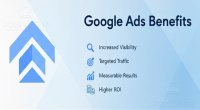Search Intent: The Key to SEO Success and Understanding Your Customer
Discover what users are really thinking when they search. Explore the 4 types of search intent, detection techniques, and how to integrate them into your content strategy. You will find answers to all your questions related to topic Search Intent: The Key to SEO Success and Understanding Your Customer in the continuation of the text.

What Is Search Intent? A Guide to Reading Your Customer’s Mind
What Exactly Is Search Intent? A Look Through Google's Eyes
The 4+1 Core Types of Search Intent
1. Informational Intent
2. Commercial Investigation
3. Transactional Intent
4. Navigational Intent
+1. Mixed & Zero-Click Intent
Techniques to Read Your Customer’s Mind: How to Identify Search Intent
How to Integrate Search Intent Into Your Content Strategy
Reach the Top with Intent-Focused SEO by Piar Media
What Is Search Intent? A Guide to Reading Your Customer’s Mind
Is your website attracting thousands of visitors, yet no one is filling out your forms, calling you, or buying your products? High traffic numbers might look impressive, but they’re meaningless if they don’t convert. The problem likely lies in the quality of your traffic—in other words, you may be inviting the wrong guests to your site. This is where the holy grail of modern SEO comes in: Search Intent.
Focusing only on keyword volume and competition is like shooting arrows at a target in a dark room. Sure, you might hit the target a few times, but true success comes from turning on the light and aiming with precision. Search intent is that light.
This comprehensive guide, prepared by Piar Media, will show you not only how to turn on that light but also how to hit the bullseye by reading your customer’s mind.
What Exactly Is Search Intent? A Look Through Google's Eyes
Search Intent is, in its simplest definition, the “why” behind a user’s query in a search engine. What is the user looking for? Are they seeking an answer to a question? Comparing products? Or ready to purchase with a credit card in hand? Google’s core mission is to deliver the best answer to the user’s "why." Google’s mission is to satisfy the user, which is why it rewards pages that best match the intent behind a search.
Think of it like a physical store: If someone walks into your store and asks, “Where are the dishwasher tablets?”, you wouldn’t show them the new televisions. The same principle applies in the digital world. Understanding a user’s intent means guiding them to the right aisle.
The 4+1 Core Types of Search Intent
To better understand search intent, we must categorize it. Here are the 4 main intent types that form the foundation of your marketing strategy, along with a fifth, more advanced one:
1. Informational Intent
The user wants to learn something, find an answer to a question, or gather information on a topic. Queries often include phrases like "what is," "how to," "top ways," and "guide."
Example Queries: "How to do SEO?", "What is blockchain technology?", "Places to visit in Konya".
Content Types: The best content for this intent includes blog posts, step-by-step guides, video tutorials, and infographics. For example, our Blockchain Technology article perfectly serves this intent.
2. Commercial Investigation
The user is close to making a purchase decision but hasn’t fully committed. They compare services, brands, or products, read reviews, and try to find the best option.
Example Queries: "best SEO agency", "Piar Media vs competitor agency", "corporate identity design reviews".
Content Types: Comparison articles, detailed reviews, "best of" lists, and case studies are perfect for this intent. It's a great opportunity to demonstrate why your brand is the best option and prove the value of services like your professional SEO consultancy.
3. Transactional Intent
The user has made their decision and is ready to take action. Their goal is to buy a product, request a quote for a service, or fill out a form.
Example Queries: "Google Ads pricing", "digital marketing agency request quote", "buy cheap hosting".
Content Types: This intent should lead users directly to your service pages, product details, or pricing sections. If someone is looking to optimize their ad spend, your Google Ads Management page should be their answer.
4. Navigational Intent
The user already knows which website or page they want to visit and uses the search engine as a bridge to get there.
Example Queries: "Piar Media", "Facebook login", "YouTube".
Content Types: The most relevant destination for the user is your homepage or the specific page they’re looking for. For instance, someone searching "Piar Media" wants to land directly on your homepage.
+1. Mixed & Zero-Click Intent
Not every search is so clear-cut. For example, the query "Konya" might indicate both informational intent (places to visit) and navigational intent (municipality website). Additionally, Google often answers queries like “1 dollar to TL” directly in the search results, meaning the user doesn’t click on any site. These “zero-click” searches require new strategies such as building brand awareness directly in the SERP and optimizing for Featured Snippets.
Techniques to Read Your Customer’s Mind: How to Identify Search Intent
Knowing the types of intent is only half of the equation. The other half is determining which type of intent a specific keyword serves.
- Analyze the SERP: Search the keyword on Google and examine the first page results. Are they blog posts? Service pages? Videos? Google is already showing you which content types it rewards—this reveals the dominant intent.
- Review Keyword Modifiers: Words like “how,” “price,” “review,” and “buy” in a query provide the biggest clues about the user’s intent.
- Use Google’s Hints: The “People Also Ask” boxes and “Related Searches” at the bottom of the page reflect users’ additional questions and various angles of intent.
- Leverage Professional SEO Tools: Tools like Ahrefs and Semrush help you analyze the intent behind keywords and identify which pages generate the most traffic. (Related Resource: SEO Tools Selection Guide)
How to Integrate Search Intent Into Your Content Strategy
Once you’ve identified the intent, it should become the core of your strategy.
- Match Content Type to Intent: Create blog posts for informational intent and service pages for transactional intent. Content that mismatches intent will struggle to rank.
- Shape On-Page SEO Around Intent: A page targeting transactional intent should include words like “Pricing” or “Buy” in the title. A page targeting informational intent should use words like “Guide” or “How To.”
- Create a Customer Journey Map: Align search intent with stages of the marketing funnel (Awareness, Consideration, Conversion). Produce informational content for awareness, comparison content for consideration, and service pages for conversion to support your customer at every step of their journey.
Reach the Top with Intent-Focused SEO by Piar Media
Understanding and implementing search intent requires ongoing analysis, experience, and a strategic mindset. It’s not a one-time task—it’s a living, breathing process. Ensuring your brand reaches the right customers, at the right time, with the right message isn’t something you can achieve with a simple keyword list.
At Piar Media, we understand the “why” behind the data and craft SEO strategies and content that resonate with your audience by reading their minds. If you're looking to gain not just traffic, but real customers who add value to your business, explore our strategic consulting services today.






